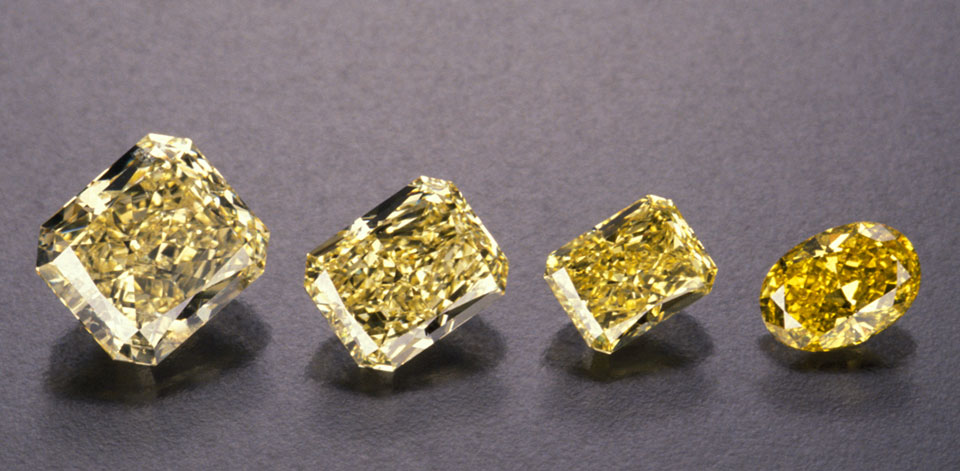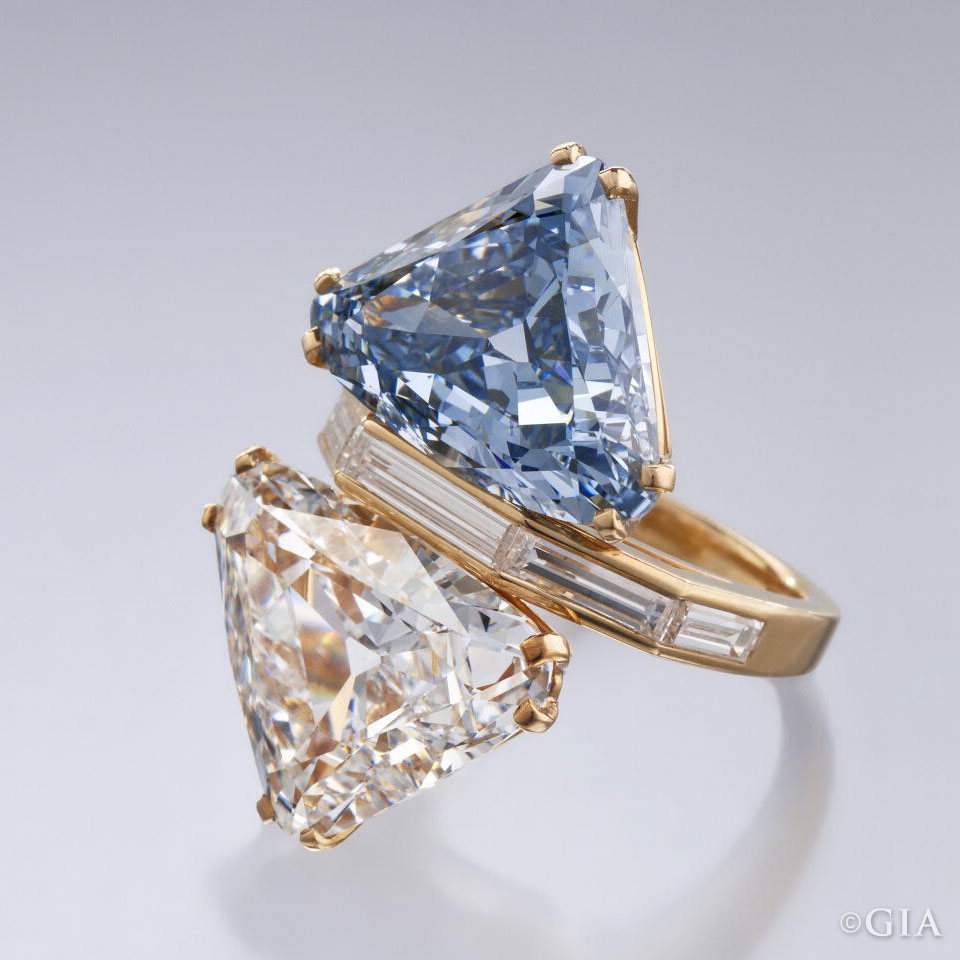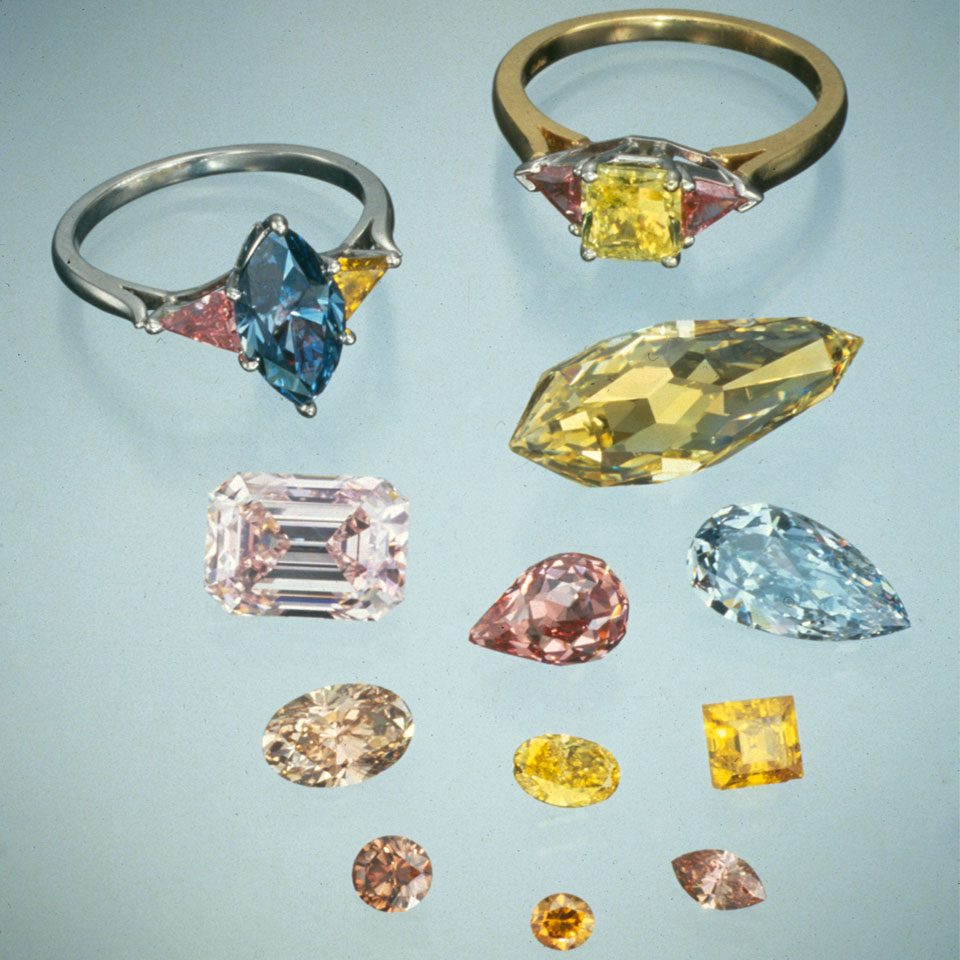Going once. Going twice. Going three times. Sold for $83.2 million.
That was the winning bid for the 59.6 carat Fancy Vivid Pink Dream in November 2013 – the most ever paid for a diamond. The amount was comparable to prices paid for paintings by some of the masters.

GIA has graded many of the world’s most significant colored diamonds: the Hope, the Heart of Eternity, the Pink Dream, and many others. As some of the hottest items in the jewelry display case, colored diamonds are fetching millions of dollars at auction. Which makes it all the more essential that a proven, trusted way to evaluate them exists
The expanded GIA Colored Diamond Grading System, now celebrating its 20th anniversary, is the universal standard for grading these rare colored marvels. Let’s take a closer look at how it came to be.
The origin of the GIA Colored Diamond Grading System
GIA first developed the grading system in the 1950s to evaluate yellow diamonds falling outside the normal colorless to light yellow (D-to-Z) color range. Over time, the Institute expanded and enhanced the system, publishing its results in Gems & Gemology in 1994, effectively debuting the Colored Diamond Grading System we know today. These enhancements included refining the colored grading system and adding the new color descriptions of Fancy Deep and Fancy Vivid.
What defines a colored diamond?
Diamonds whose colors fall outside the GIA D-to-Z color range are described as “Fancy Colors” or “Fancies.” In evaluating their color, GIA takes into consideration three attributes:
- Hue – the attribute we generally think of as color, for example, red, yellow, green, blue, or anything in between.
- Tone – the color’s relative lightness or darkness
- Saturation – the color’s depth and strength
GIA recognizes 27 different hues or “colors” for fancy colored diamonds, and describes tone and saturation with terms like Fancy Light, Fancy Vivid, Fancy Deep.
In general, the more color a diamond has, the better. Fancy Deep and Fancy Vivid diamonds, for example, have more color than Fancy Light diamonds.
Grading Colored Diamonds
Like D-to-Z diamonds, GIA evaluates colored diamonds under carefully controlled lighting and viewing conditions. Expert graders view the diamond in its face-up position and establish the three attributes of that color by bracketing each of the attributes using reference stones as color comparators, finally assigning one of nine color fancy grades to the colored diamond.
Color grading colored diamonds requires considerable skill, as slight gradations in color can make a big difference in price. Additionally, diamonds can be treated to alter their color. Since naturally colored diamonds are worth far more than treated ones, expert evaluation is essential to determine what is referred to as the “origin of color”.

Another consideration: The rarer the color, the more valuable the diamond. Red, green, purple, and orange are the rarest colored diamonds. Clarity, cut, and carat weight are secondary considerations (though all things being equal, a larger colored diamond is still more valuable than a smaller one).
Get Ready to be Dazzled
Now that you know what makes a colored diamond desirable and have a better understanding of the GIA Colored Diamond Grading System, get ready to enjoy some dazzling beauties. And remember that the GIA Colored Diamond Grading System helps you know what you’re purchasing – and lets you buy with confidence.


Ready to learn more about fancy colored diamonds? Visit GIA’s online Gem Encyclopedia
Custom Field: Array

